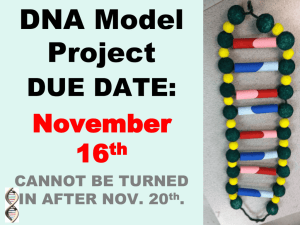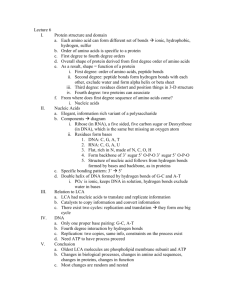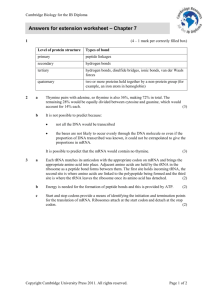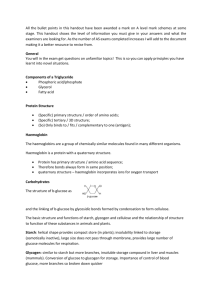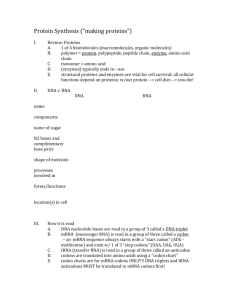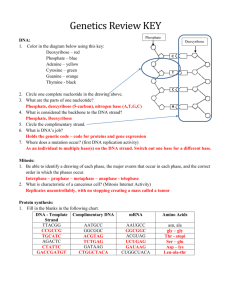QUIZ 3 Name: 1. What benefit(s) is/are there to basepairs being held
advertisement
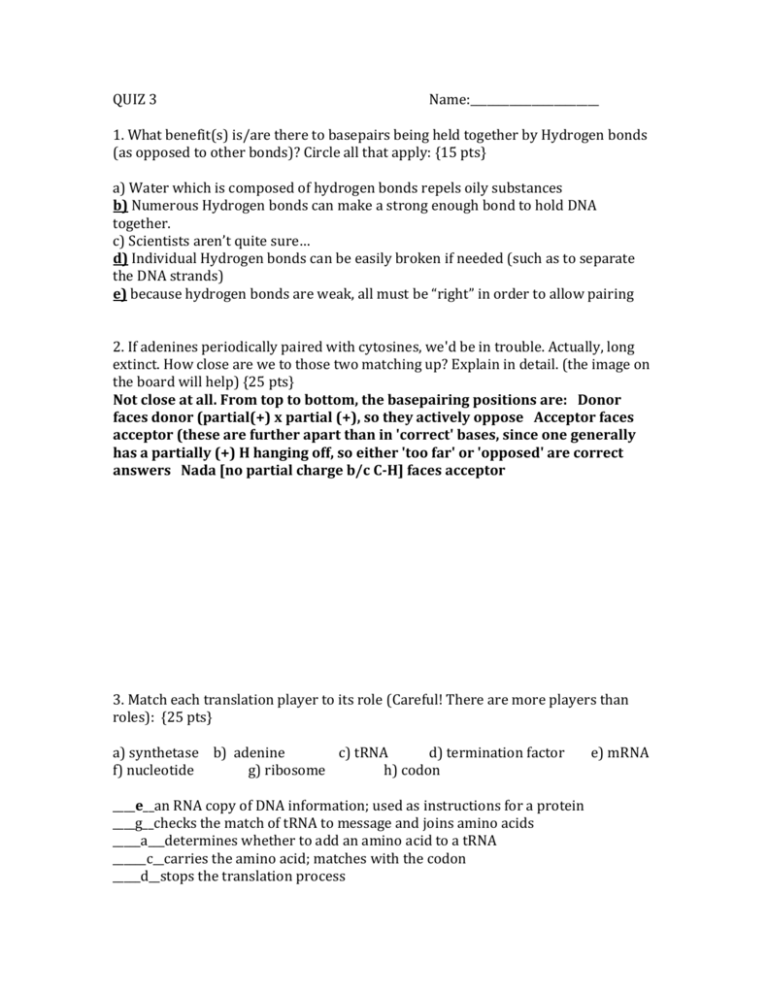
QUIZ 3
Name:_______________________
1. What benefit(s) is/are there to basepairs being held together by Hydrogen bonds
(as opposed to other bonds)? Circle all that apply: {15 pts}
a) Water which is composed of hydrogen bonds repels oily substances
b) Numerous Hydrogen bonds can make a strong enough bond to hold DNA
together.
c) Scientists aren’t quite sure…
d) Individual Hydrogen bonds can be easily broken if needed (such as to separate
the DNA strands)
e) because hydrogen bonds are weak, all must be “right” in order to allow pairing
2. If adenines periodically paired with cytosines, we'd be in trouble. Actually, long
extinct. How close are we to those two matching up? Explain in detail. (the image on
the board will help) {25 pts}
Not close at all. From top to bottom, the basepairing positions are:
Donor
faces donor (partial(+) x partial (+), so they actively oppose
Acceptor faces
acceptor (these are further apart than in 'correct' bases, since one generally
has a partially (+) H hanging off, so either 'too far' or 'opposed' are correct
answers
Nada [no partial charge b/c C-H] faces acceptor
3. Match each translation player to its role (Careful! There are more players than
roles): {25 pts}
a) synthetase b) adenine
c) tRNA
d) termination factor
f) nucleotide
g) ribosome
h) codon
____e__an RNA copy of DNA information; used as instructions for a protein
____g__checks the match of tRNA to message and joins amino acids
_____a___determines whether to add an amino acid to a tRNA
______c__carries the amino acid; matches with the codon
_____d__stops the translation process
e) mRNA
4.) Complete the thoughts; use accurate words or short MEANINGFUL phrases
{20pts}
“Translation is a good term because the ribosome creates a chain of ___a____ based
on instructions that it receives in the form of a(n) ____b____ molecule”
a) amino acids
b) mRNA
“Transcription is a good term because RNA Polymerase creates a(n) ___c___
copy of DNA. The new copy is generated on the basis of ____d____ between DNA bases
and the incoming pieces.
c) exact/complementary/mRNA
d) Hydrogen-bonds
5.) Label the hydrogen bond donors and acceptors in the following image (use
words and arrows): {15 pts}
I’ll go over this in class


